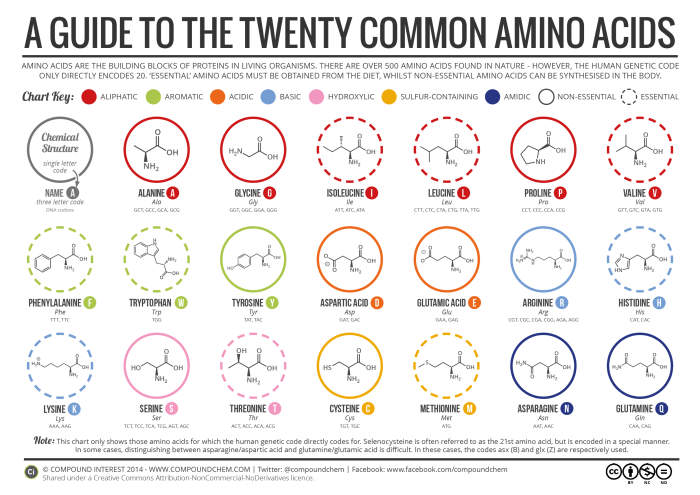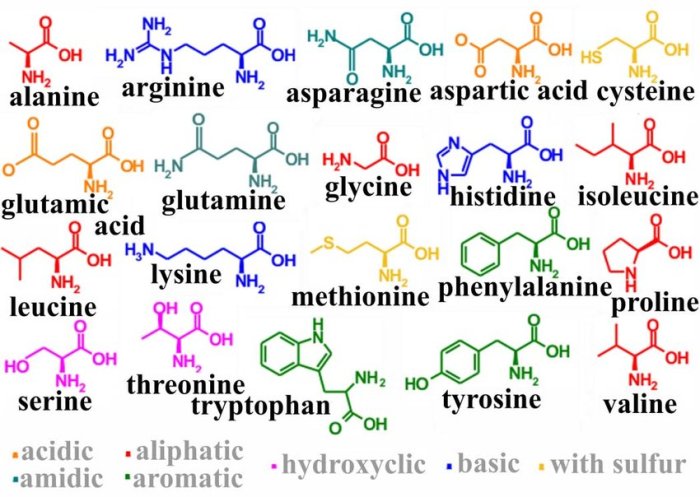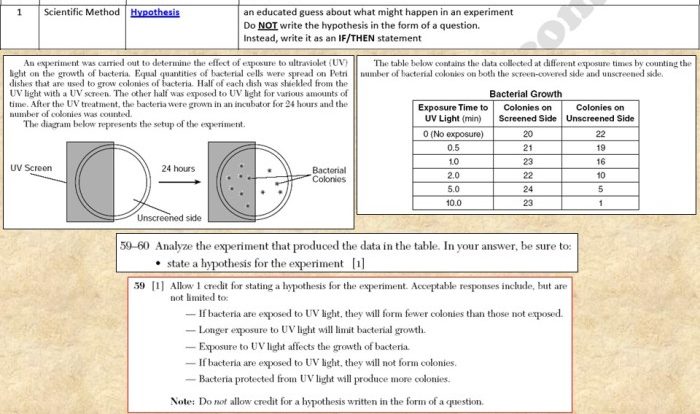Best way to memorize amino acids – Embark on a journey to master the art of memorizing amino acids. This comprehensive guide will unravel the most effective techniques, empowering you to retain this essential knowledge effortlessly.
From the depths of mnemonic devices to the power of active recall, we will delve into a myriad of strategies that will transform your learning experience.
Mnemonic Techniques: Best Way To Memorize Amino Acids

Mnemonics are memory aids that use techniques such as acronyms, rhymes, or imagery to enhance recall. They provide a structured and memorable framework for organizing information, making it easier to retrieve and retain.
In the context of memorizing amino acids, mnemonics can be particularly effective due to the unique properties and characteristics of these molecules.
Acronyms
Acronyms are abbreviations formed from the first letters of a series of words or phrases. They provide a concise and easy-to-remember way to represent a larger body of information.
For example, the acronym ” Every Good Boy Deserves Fudge” can be used to remember the sequence of the first six essential amino acids: Essential, Glycine, Beta-alanine, D-aspartic acid, Fenylalanine.
Rhymes
Rhymes can be another effective mnemonic technique. They take advantage of the brain’s natural tendency to associate sounds and create a memorable and enjoyable learning experience.
For example, the rhyme ” Alanine, Serine, Threonine, and Cysteine, All have One Amino Group” can be used to remember the amino acids that contain only one amino group.
Spaced Repetition
Spaced repetition is a technique used to enhance memory by reviewing information at increasing intervals. It is based on the principle that our brains forget information over time, but the rate of forgetting can be slowed down by periodically reviewing the material.
When memorizing amino acids, spaced repetition can be implemented by reviewing the structures and names of the amino acids at increasing intervals. For example, you might start by reviewing the amino acids once a day, then once a week, then once a month, and so on.
This will help to keep the information fresh in your mind and make it less likely that you will forget it.
Implementing Spaced Repetition Techniques
There are a number of different ways to implement spaced repetition techniques. One popular method is to use flashcards. You can create flashcards with the amino acid structure on one side and the name of the amino acid on the other side.
Then, you can review the flashcards at increasing intervals, as described above.
Another way to implement spaced repetition is to use a spaced repetition software program. These programs will automatically schedule your reviews for you, so you don’t have to worry about keeping track of it yourself. There are a number of different spaced repetition software programs available, so you can choose one that fits your needs and preferences.
Active Recall

Active recall is a memory retrieval technique that involves actively trying to recall information from memory without looking at your notes. This is in contrast to passive recall, which involves simply rereading your notes or flashcards. Active recall is a more effective way to memorize information because it forces you to think about the material and retrieve it from memory, which strengthens the memory trace.
There are many different ways to practice active recall, including:
Retrieval Practice
- Self-testing:Quiz yourself on the material without looking at your notes.
- Free recall:Try to recall as much information as you can from memory without any prompts.
- Cued recall:Use cues, such as a question or a , to help you recall information.
Spaced Repetition
Spaced repetition is a technique that involves reviewing material at increasing intervals. This helps to keep the information fresh in your mind and prevents you from forgetting it. There are many different spaced repetition systems available, such as Anki and SuperMemo.
Interleaving
Interleaving is a technique that involves mixing up different types of problems or questions. This helps to improve your understanding of the material and makes it easier to recall information from memory.
Chunking
Chunking is a cognitive technique that involves organizing information into smaller, more manageable units.
When applied to amino acids, chunking can significantly improve memorization by breaking down the large pool of information into smaller, more manageable chunks.
Strategies for Chunking Amino Acids
- Group by Properties:Amino acids can be grouped based on their properties, such as polarity, charge, or side chain structure. This helps create meaningful associations and makes it easier to recall.
- Use Mnemonic Devices:Mnemonic devices, such as acronyms or rhymes, can help create memorable chunks. For example, the acronym “HELIX” can be used to remember the six hydrophobic amino acids (Histidine, Glutamic acid, Leucine, Isoleucine, Tyrosine, and Phenylalanine).
- Visualize Structures:Creating mental images or diagrams of amino acid structures can enhance memorization. This helps visualize the relationships between different amino acids and their properties.
Visual Aids

Visual aids can be a powerful tool for memorizing amino acids. By creating flashcards or diagrams, you can engage multiple senses and create a more memorable experience.
Flashcards are a classic way to study amino acids. On one side of the card, write the name of the amino acid. On the other side, write its structure, three-letter code, and one-letter code. You can also include other information, such as the amino acid’s function or properties.
Diagrams
Diagrams can also be helpful for visualizing amino acids. One common type of diagram is a ball-and-stick model. This type of diagram shows the atoms of the amino acid as balls, and the bonds between the atoms as sticks. Another type of diagram is a space-filling model.
This type of diagram shows the amino acid as a solid object, with the atoms represented as spheres.
Contextual Learning

Contextual learning is an effective technique for memorizing amino acids by connecting them to meaningful contexts.
By incorporating contextual learning into memorization techniques, individuals can establish stronger neural connections between amino acids and their biological functions, structures, and interactions.
Incorporating Contextual Learning, Best way to memorize amino acids
- Real-Life Scenarios:Relate amino acids to specific proteins or enzymes involved in bodily functions. For instance, connect tryptophan to the production of serotonin, a neurotransmitter associated with mood regulation.
- Biological Pathways:Understand the role of amino acids in metabolic pathways. For example, associate leucine with its involvement in protein synthesis and muscle growth.
- Structural Relationships:Link amino acids to their specific structures, such as their side chains and their impact on protein folding. For instance, remember that proline has a unique cyclic structure that affects protein conformation.
- Physiological Functions:Connect amino acids to their physiological roles in the body. For example, relate glycine to its function as a neurotransmitter inhibitor in the central nervous system.
Retrieval Practice
Retrieval practice is a learning technique that involves actively recalling information from memory. It is a highly effective way to memorize amino acids because it forces the brain to work harder to retrieve the information, which strengthens the memory trace.There
are many different ways to implement retrieval practice techniques. One simple method is to quiz yourself on the amino acids at regular intervals. You can also try to recall the amino acids from memory without looking at your notes. Another effective technique is to create flashcards and test yourself on them.
Spaced Repetition
Spaced repetition is a retrieval practice technique that involves reviewing information at increasing intervals. This helps to keep the information fresh in your mind and prevents you from forgetting it. There are many different spaced repetition apps and software programs available, such as Anki and SuperMemo.
Popular Questions
How can I use mnemonic devices to memorize amino acids?
Mnemonic devices, such as acronyms, rhymes, or stories, can help you associate amino acids with memorable cues, making them easier to recall.
What is spaced repetition, and how does it benefit memorization?
Spaced repetition involves reviewing material at increasing intervals, which strengthens memory traces and improves long-term retention.
How does active recall enhance memorization?
Active recall forces you to retrieve information from memory, which is a more effective way to learn than simply rereading notes.


